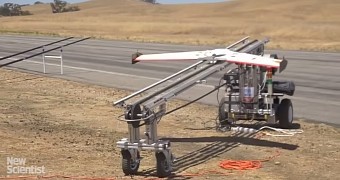Drones are here to stay, and more than that, they seem to multiply, blotting the sun. Here's how drones are slowly bringing the apocalypse upon us.
It seems that a team of researchers from the Naval Postgraduate School in Monterey, California, managed to lift 50 drones in the air at once, which were controlled by a single person, thus building the largest drone swarm to date.
Using Zephyr drones that are custom made by hobbyists and cost $2,000 (€1,773) apiece, the researchers managed to organize and sync the machines together using mainly WiFi. The reason for this is that conventional drone comms can get overlapped by multiple drones using the same signal, resulting in total chaos. WiFi is cheaper and more effective and covers a wider area.
The drones were organized in mid-air via an algorithm that orchestrates their movements, and were used only in simulations. Apparently, the algorithm can be used for search-and-rescue operations, in which the flight pattern will resemble that of foraging bees.
According to the New Scientist, the swarming operations were pretty basic and involved the typical bird flock mentality of "follow-me," where more UAVs follow the leader in the sky. The swarm behavior will make the drones look as if they were flying randomly, since the machines try to optimally scan the ground in the shortest amount of time. Currently, the team can launch one craft into the air every 30 seconds, with a planned reduction of pre-flight safety checksdown to 10 seconds.
Considering that is the Naval Research institute, the shape of these aircraft could give us a hint of the future, so expect a swarm of X-47Bs to follow soon.

 14 DAY TRIAL //
14 DAY TRIAL // 